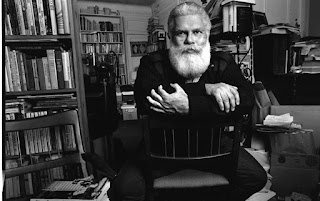.
Flushed with the feeling of success that comes from having cleaned my office to such a degree that the rugs are now visible, I thought today that I would take on the problem of excess books. Surely there are
some I don't actually need. So I chose a shelf at near-random (it was one of those actually accessible without moving the boxes of books stacked before it to another location), and started going through both rows (the shelves are double-stacked, of course) to see what they contained.
Only to discover that the shelf was stocked with books placed there at seeming random. Mr. Evelyn's diary lies cheek-to-jowl with Gertrude Stein's
Picasso. Jeff Danziger's
Teed Tales abuts, appropriately enough, a history of Vermont. There is a collection of stories by T. Corgahesson Boyle, Zora Neale Hurston's autobiography, a novel by Sean Stewart, and a collection of essays by Ursula K. Le Guin. These last two, by the way, are misfiled since I have a science fiction section arranged almost alphabetically by author and a designated place for stacks of SF criticism and related essays. Which is where Gwyneth Jones'
Joanna Russ should be as well.
Here's T. H. White's wonderful collection of mythical animals from medieval bestiaries,
The Book of Beasts. The Return of Fursey! Mosses from an Old Manse. Flann O'Brien's
The Best of Myles reappears from hiding; after I've obsessively reread it a few times, I'll have to hide it somewhere else among my books, if I'm ever to read anything else. Oh, but there's also John McPhee's
The Pine Barrens, which some of us persist in thinking his best book. Though it has competition. And here is a battered but charming old hardcover of Charles Fort's
The Book of the Damned. I have a biography of Fort around here somewhere, though I doubt I'll find it today. Some few of these I haven't read--
Fishing from Earliest Times is one example, though I'm sure I'll get to it soon. But I've read every story in
The Corrector of Destinies, Melville Davidson Post's extremely odd collection of detective fiction (sort of), and I'll have to blog about it here someday.
There are thirty shelves of books on one wall of my office and my first attack upon the one provided me with nothing to cull, And I've put aside a short stack of books to read or reacquaint myself with. Not have I done much to organize it--but wait! Here, just one shelf below is Damon Knight's
Charles Fort. Up it goes, alongside
The Book of the Damned, so nobody could say the last hour was wasted. Though it came close.
Nor was I able to impose a theme upon the shelf, other than Books I Am Delighted to Possess. But maybe that's enough.
In any case, it will have to do.
Above: For technical reasons, I'm having difficulty uploading a picture of the wall of books in my office. So here's a pic of part of the wall of books in my bedroom.
*


















